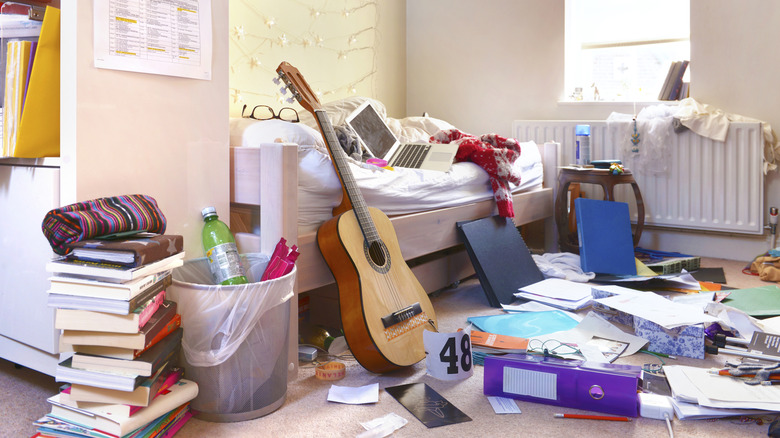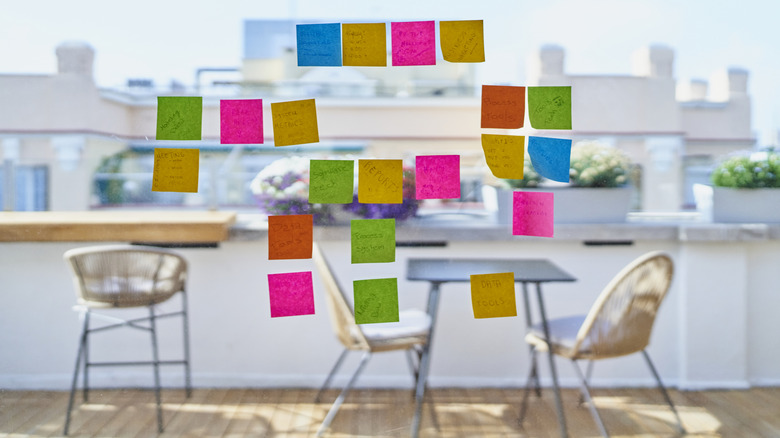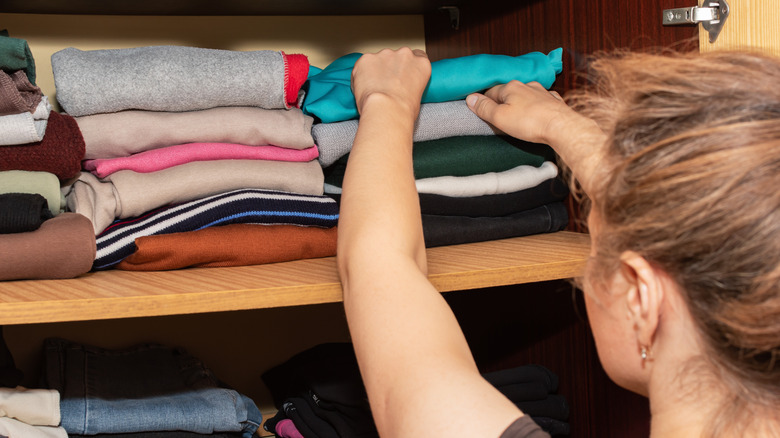The Unexpected Decluttering Method That Calls For A Little Bit Of Chaos
We may receive a commission on purchases made from links.
A cluttered room isn't just an eyesore. It can sour your mood, disrupt your focus, and increase your day-to-day stress. Plus, the sense of chaos it creates can harm household relationships. Enter the chaos method of decluttering, which finds disorder's silver lining and uses it to bring about order and calm. Over the past few years, it has gained a following through Kim Jones, a professional organizer and author of "The No-Nonsense Home Organization Plan."
Unlike the ski slope decluttering method, which involves tidying a room section by section so you don't feel overwhelmed, the chaos method dares you to dump out the contents of every closet and container in a given space. Though this mound of disarray may sound daunting, viewing your belongings as a group can reveal what's essential to keep and what's just taking up space. It can also help you find the best spots to store different items.
Once you have a sense of your pile's components, your next step is categorizing. Jones suggests (via The Kitchn) that you "get everything categorized and on the floor, and then go room by room and organize" if you're decluttering a whole house. For a single room, you should dump your items, categorize them, and then put them wherever you'd like them to live in your home. Ready to try it? Grab a marker and some sticky notes, because you're about to make some labels.
Start taming the jumble with sticky notes
You don't have to get hyper-specific when creating categories and labels. For instance, your category list might include books, office supplies, and clothing. Make a sticky note for each one. Then, sort the big pile's contents into smaller, specific category collections. Deposit these collections in containers and label them with their corresponding notes. Also, stick notes to places where you plan to house certain belongings, which can save you time later.
As you create category collections, cull what you plan to give away, throw away, or recycle and place these items into labeled containers as well. This is also the time to ask yourself about your habits and intentions. Are you likely to wear that inflatable dinosaur costume again? Do you love cake decorating so much that you need eight different piping bags? When's the last time you played the banjo you keep in your closet? The 90/90 rule and 80/20 rule can help you answer questions like these with honesty and confidence.
Finish the job by placing items in their homes
Once you've boxed up your donations, move them out of your workspace to minimize distractions. Take your trash and recyclables to their bins, too. After that, make a beeline for the sticky notes with ideas for where to store things. They'll help you put away numerous belongings without giving it too much thought. Then, devise a plan for tackling the rest of your items. For example, you might move bulky objects to their homes first, while you're likely to have the most energy. After that, you might find locations for the items you use most often.
As you shuttle items to their designated spaces, do your best to stay motivated. Embrace any bits of relief that emerge, imagine how calm an organized home can make you feel, and consider what would help prevent clutter from accumulating. You could also come up with a small reward to enjoy when you're finished, perhaps a favorite meal or a movie-watching session. And remember, when you finish the job, you'll get the best reward of all: finally being free of overwhelming clutter.


